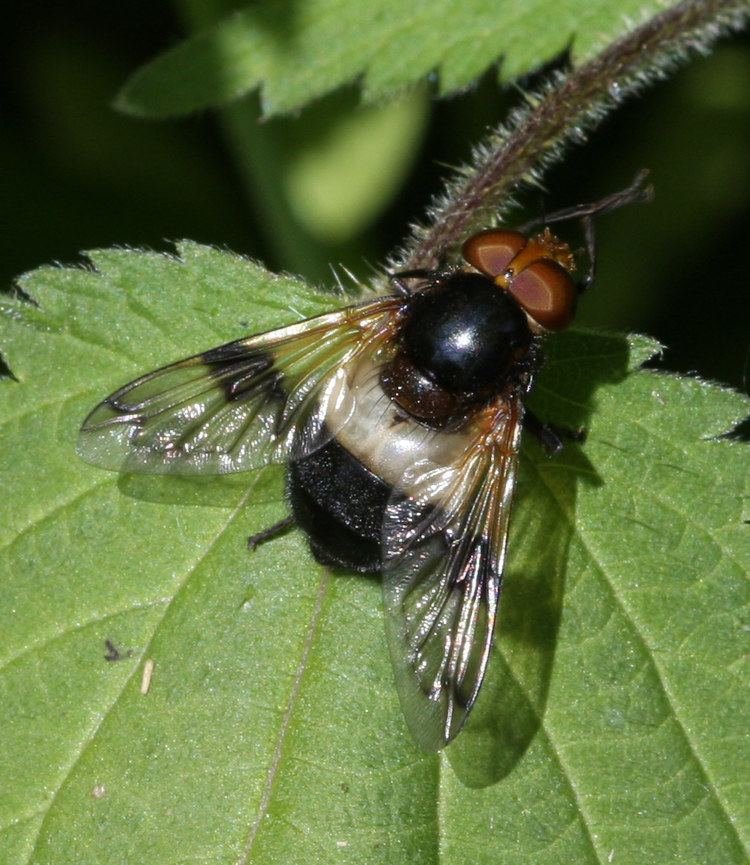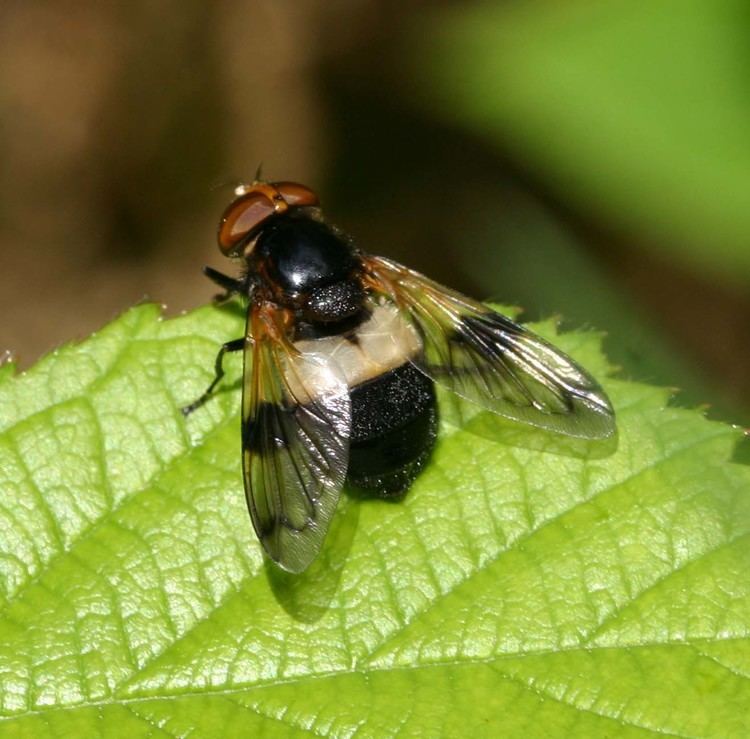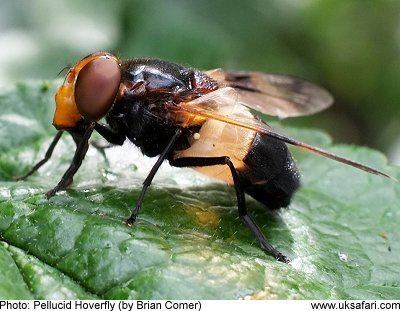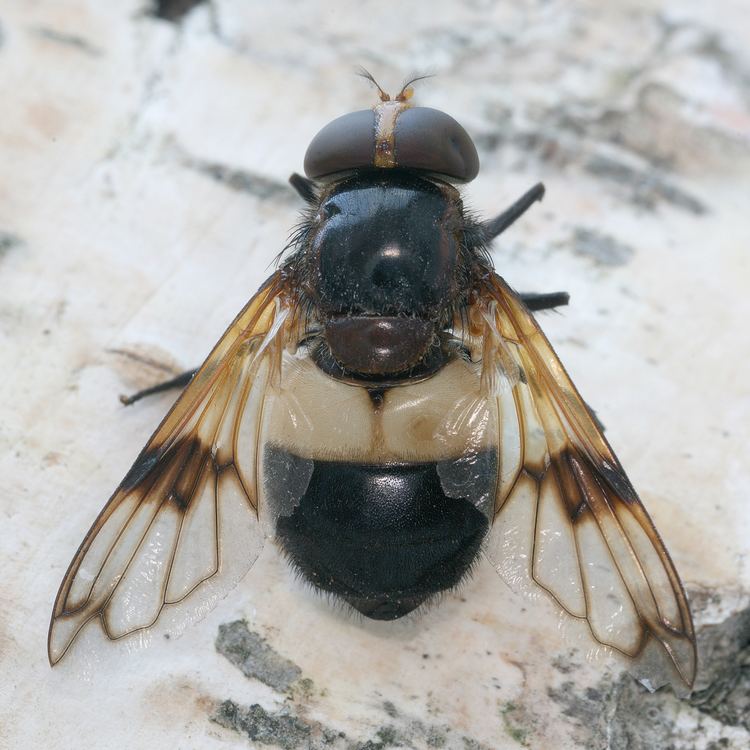Higher classification Volucella | Scientific name Volucella pellucens Rank Species | |
 | ||
Similar Volucella, hoverfly, Insect, Fly, Volucella bombylans | ||
Volucella pellucens great pied hoverfly
Volucella pellucens (also called the Pellucid Fly) is a hoverfly. It occurs in much of Europe, and across the Palearctic to Japan.
Contents

It is about 15–16 mm in length with a broad body. It is mainly black, but the front part of its abdomen has a broad, yellow band, giving it the appearance of a bee or wasp. The two wings are transparent, as with most flies, but the leading edge is amber, with a brown patch on each wing.

The mimicry of bees or wasps in shape, and colouration is shown by other hoverflies, and this is thought to protect against falling prey to birds and other insectivores which avoid eating true wasps because of their stings. However, the difference between hoverflies and wasps or bees is hoverflies have two wings, and the Hymenoptera species have four.

The adult V. pellucens is usually found in woodlands, but will enter gardens. It lives on nectar and pollen, as with most hoverflies, and visits flowers from May to October, showing a distinct preference for bramble. It typically flies at head height.

The female enters the underground paper nests of the common wasp, Vespula vulgaris, or the German wasp, Vespula germanica, and lays her eggs. Despite the conspicuous nature of the intruder, the hosts do not appear to register her presence as she makes her way into the otherwise well-guarded nest entrance. The V. pellucens larvae then feed on the hosts' young and dead adults.

When the eggs hatch, the larvae drop to the bottom of the nest chamber, where they feed as scavengers on debris. This may include dead wasp grubs and adults, remains of food brought into the nest by the wasps, and other insects living there. Mature larvae are sometimes on the combs and have been recorded feeding on dead or moribund wasp larvae and pupae which were left in the combs when the nest was abandoned by the wasps in the autumn. Fully grown larvae leave the nest and pupate in the soil below. If the host nest is in the roof or walls of a house, then it is not unusual for the larvae to end up crawling about in the dwelling space.
Adult hoverflies emerge the following year from about mid-May to June.
